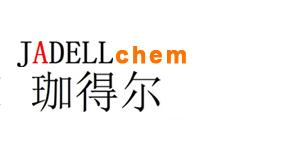Recombinant Human Insulin-like Growth factor-2 是一种促进有丝分裂的细胞因子,与 IGF 受体结合,能够调节多种组织的生长,如神经组织、淋巴组织、生殖组织、平滑肌、内皮细胞和骨骼等。
Synonyms
rHuIGF-2; Somatamedin A; IGF-II ; 重组人胰岛素样生长因子-2
Species
HumanSource
E. coli Accession
P01344 Gene ID
3481 Molecular Weight
Approximately 7.6 kDa AA Sequence
MAYRPSETLC GGELVDTLQF VCGDRGFYFS RPASRVSRRS RGIVEECCFR SCDLALLETY CATPAKSE Biological Activity
The ED50 is <20 ng/mL as measured by FDCP-1 cells, corresponding to a specific activity of >5 × 104 units/mg. Appearance
Lyophilized powder. Formulation
Lyophilized after extensive dialysis against 25 mM Tris, pH 8.0. Endotoxin Level
<0.2 EU/μg, determined by LAL method. Reconstitution
Reconstitute the lyophilized recombinant Human Insulin-like Growth factor-2 (rHuIGF-2) to 100 µg/mL using ddH2O. Storage & Stability
Lyophilized recombinant Human Insulin-like Growth factor-2 (rHuIGF-2) is stored at -20°C. After reconstitution, it is stable at 4°C for 2 weeks or -20°C for longer. It is recommended to freeze aliquots at -20°C or -80°C for extended storage. Shipping
Room temperature in continental US; may vary elsewhere. Background
Insulin-like growth factor (IGF) modulates growth in many tissues, such as nervous tissue, lymphoid tissue, reproductive tissue, smooth muscle, endothelium, and bone. Human Insulin-like Growth factor-2 (IGF-II) is produced by osteoblasts, and its mitogenic effects are mediated by their binding to the IGF plasma membrane receptors. The IGF type 1 receptor binding to both IGF-I and IGF-II, is thought to be the predominate receptor involved in mediating the effects of these growth factors in most cell types, including osteoblasts[1]. |



